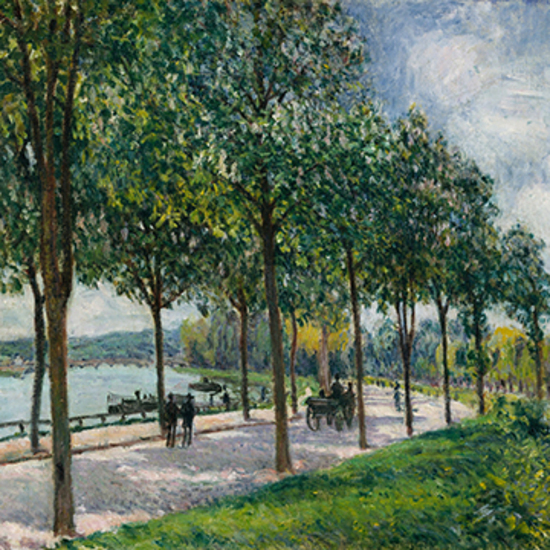
1860年代,西斯萊與畢沙羅、莫內、巴齊耶、雷諾瓦相識,開始從自然中汲取靈感創作。這些藝術家於1874年的巴黎獨立書會中被正式命名為印象派,而西斯萊也在1870年代獲得了短暫但相當大的成功。與妻子和孩子住在塞夫爾時,西斯萊描繪了一條彎曲的小路,兩旁是盛開的栗樹,小路沿著塞納河的彎道,讓觀畫者可以融入整個繪畫空間。
In the 1860’s, Sisley met Pissarro, Monet, Bazille, and Renoir, with whom he brought forth the practice of painting directly from nature. Exhibiting with the Impressionists, as they were formally named at the time of their independent exhibition in Paris in 1874, Sisley enjoyed short-lived but considerable success during the 1870’s. While residing in Sèvres with his wife and children, Sisley painted this view of a curved pathway lined with chestnut trees in full bloom. The pathway follows a bend in the Seine, lending the viewer access across the pictorial space.

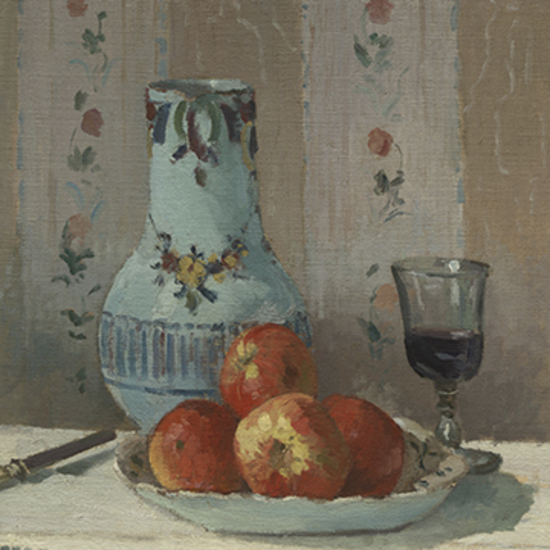
不同於莫內、雷諾瓦、塞尚和藝術圈裡的其他畫家,畢沙羅畫的靜物很少,大部分是在他職業生涯的後期。因此,這幅1872年的作品因其主題、清晰表達的形式和對光線的微妙操縱而與眾不同。同年出現另一幅可與之媲美的畫作《圓籃中的蘋果和 梨》(私人收藏),其尺寸和設計與這幅畫作相同,背景為相同的花卉圖案壁紙。
Unlike other artists in his circle, Pissarro painted few still lifes, most late in his career. This work of 1872 is, therefore, exceptional for its subject, as well as for its clearly expressed forms and subtle manipulation of light. There is only one other comparable painting by the artist, “Apples and Pears in a Round Basket” of the same year (private collection), which is identical in size and setting to the present canvas, featuring the same floral-patterned wallpaper in the background.

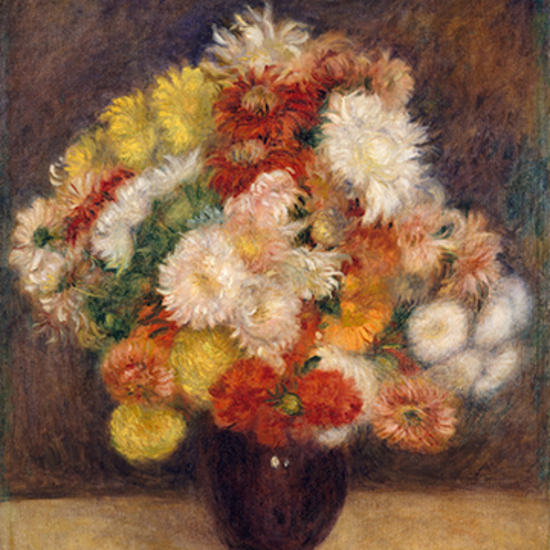
雷諾瓦認為比起為人物作畫,為靜物作畫可以讓他有更大的自由。他告訴作家喬治·里維埃:「當我描繪花時,我可以隨意嘗試色調,而不必擔心破壞畫布,而人物畫作就無法如此隨心所欲,因為會擔心作品被破壞。」
Renoir felt that he had greater freedom to experiment in still lifes than in figure paintings. "When I paint flowers, I feel free to try out tones and values and worry less about destroying the canvas," he told the writer Georges Rivière. "I would not do this with a figure painting since there I would care about destroying the work."

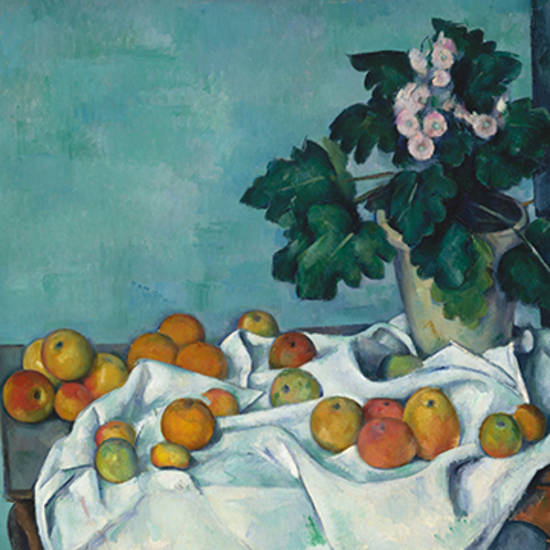
塞尚很少描繪開花植物或新摘採的花束,因為這些植物長時間下容易枯萎。而塞尚的靜物畫中只有三幅出現過盆景植物,兩幅為家族的查德布凡溫室景觀,以及在20年間(大約從1878年到1906年)創作的精美水彩畫。塞尚也在他1890年代最出色的三幅靜物畫保留了這張帶有扇形圍裙和獨特弓形腿的桌子。
Cézanne rarely painted flowering plants or fresh-cut bouquets, which were susceptible to wilting under his protracted gaze. He included potted plants only in three still lifes, two views of the conservatory at Jas de Bouffan, his family's estate, and about a dozen exquisite watercolors made over the course of two decades (from about 1878 to 1906). Cézanne seems to have reserved this particular table, with its scalloped apron and distinctive bowed legs, for three of his finest still lifes of the 1890s.

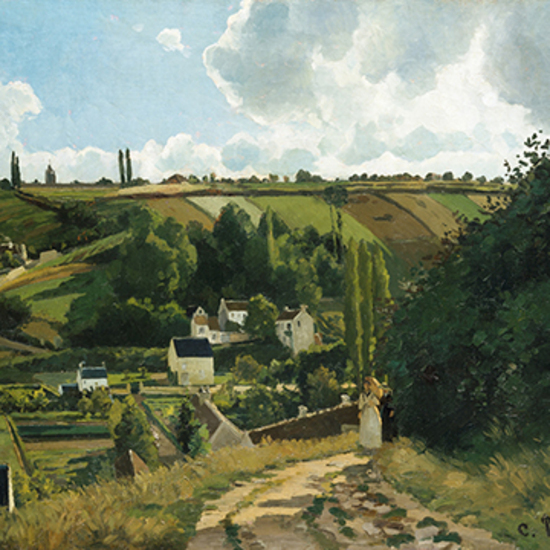
這幅巴黎西北部蓬圖瓦茲的景色,為畢沙羅建立了法國鄉村風景創新畫家的聲譽。在1868年沙龍中與另一幅鄉村風光共同展示時,評論家埃米爾·左拉熱情地稱讚了這幅畫,他寫道:「這就是現代農村風格。可以感受到人們在這逗留、時光流轉、大自然的鬼斧神工........而這座小山谷,這座山,有種英雄般的淳樸及直率。沒有什麼比這更樸實了。從平凡的現實中,畫家的氣質造就了一幅難得的生命與力量之詩。」
This view of Pontoise, just northwest of Paris, helped establish Pissarro’s reputation as an innovative painter of the rural French landscape. The critic Émile Zola praised the picture enthusiastically when it was shown along with another rustic scene at the Salon of 1868, writing, "This is the modern countryside. One feels that man has passed by, turning and cutting the earth. . . . And this little valley, this hill have a heroic simplicity and forthrightness. Nothing would be more banal were it not so grand. From ordinary reality the painter's temperament has drawn a rare poem of life and strength."

標準款內建/大都會(open data)